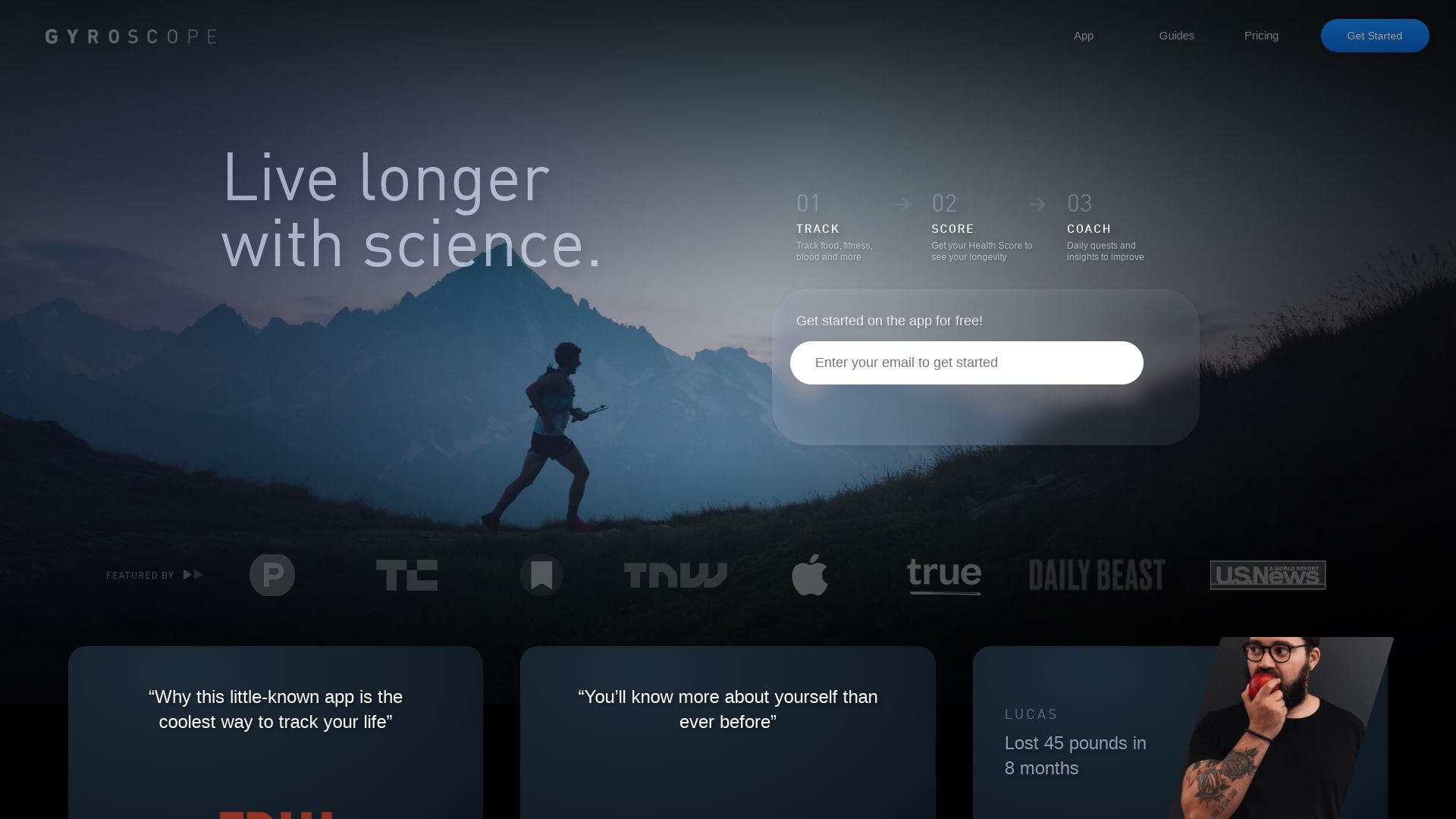LiDAR stands for Light Detection and Ranging. It is a well-established technology that has been increasingly deployed in consumer products and driverless vehicles. Used for over 50 years, LiDAR was initially limited in mass market applications due to high costs but has become the preferred sensor in driver-assisted cars for its accuracy in mapping positions, distances, object detection, and 3D imaging.

For those exploring alternatives to LiDAR, options include LiDAR SLAM, SLAM, LDS, Laser, VSLAM, Gyroscope.
LiDAR SLAM
Invented by CSIRO and commercialized by GeoSLAM, LiDAR SLAM is an optimized spatial imaging solution employing lasers for decisive orientation and frequent position calculation, a radical jump from the initial versions that used images.SLAM technology is the linchpin of GeoSLAM’s suite of offerings, allowing robust and reliable georeferencing of data across various environments.
LiDAR SLAM Top Features
- Real-time calculation of position with continuous-time SLAM
- Optimal SLAM processing tailored by GeoSLAM Beam and Connect
- Superior mapping accuracy with Velodyne VLP-16 sensor
- Not requiring multiple static setups or GPS signals
| Mobile SLAM System | Eliminates need for bulky tripod set-ups; amenable for indoor spaces |
| GeoSLAM Beam | A next-generation SLAM algorithm |
| Laser scanning | Accurate calculation of distance and objects |
LiDAR SLAM Limitations
- Requires regular software updates for enhanced performance
- Maps must be manually redone when furniture or other objects in the environment are moved
- Performance can be influenced by the capturing environment
LiDAR SLAM Use Cases
Autonomous vehicles
LiDAR SLAM maps the surrounding area for autonomous vehicles, aiding in injury-free navigation.
Robot vacuums and mobile robot fleets
SLAM technology simplifies the automatic task of mapping an uncharted environment and navigation in home appliances like robot vacuums and warehouse fleets.
Automated Guided Vehicles (AGVs) and Autonomous Mobile Robots (AMRs)
With over 100,000 units shipped globally in 2021 and projected growth to $18B by 2027, AGVs and AMRs employ SLAM to perform autonomous tasks with higher efficiency.
SLAM
SLAM or Simultaneous Localization and Mapping is a widely used method in the world of autonomous vehicles. It uses advanced algorithms to process data from various sensors in real time, to create a map and localize the vehicle. With growing improvements in speed of computer processing and the availability of low-cost sensors, the utilization of SLAM is on the rise.
SLAM Top Features
- Obstacle Mapping: SLAM processes an array of data from laser range finders and cameras to effectively map obstacles.
- Variety of Applications: SLAM has wide uses including home robot vacuums, warehouse robots, self-driving cars, and drones navigating unknown environments.
- High Tech Components: SLAM technology composes of sensor signal processing (front-end), and pose-graph optimization (back-end).
- Visual SLAM: Incorporates lens, stereo, and depth cameras with graph-based optimization.
| Lidar SLAM: | Employs laser sensors for precise measurements, ideal for high-speed vehicles. |
| Depth Measurements: | Crucial in creating a SLAM map. |
| Landmark Recognition and Pose Graph: | They help in minimizing errors. |
SLAM Limitations
- Localization Errors: Errors can accumulate over time, leading to significant deviation from actual values.
- Loop Closure Problem: While navigating a square-shaped passage, a substantial error could occur.
- High Computational cost: Processes like image optimization and processing could prove to be costly.
SLAM Use Cases
Home Robot Vacuums
SLAM finds efficient use in motion planning for home robot vacuums, assisting them to manoeuvre around your house without running into obstacles.
Warehouse Robots
In warehouses, SLAM aids mobile robots in executing tasks like picking, packing, and logistics smoothly by optimizing paths and avoiding collisions.
Self-driving Cars
SLAM technology allows self-driving cars to develop a real-time understanding of their environment, aiding in safe and precise navigation.
LDS

Explore the realms of LDS, the technological arm of the Church of Jesus Christ of Latter-day Saints, an organization with a rich historical embrace of communication tech, right from the 1867 telegraph line.
LDS Top Features
- World’s longest running radio broadcast since 1929, featuring weekly sermons by Mormon Tabernacle Choir.
- Adoption of pioneering technologies such as telephone, radio and television.
- Utilization of digital tech like CDs and DVDs to disseminate content in over 27 languages.
- Effective leveraging of satellite networks since 1957 for expansive communication and training.
| Platform | Description |
|---|---|
| LDS.org | The Church’s first internet presence established in 1996, providing comprehensive insight into Church segments. |
| FamilySearch.org | An external platform dedicated to ancestral exploration. |
| Mormon.org | Launched in 2002, this platform elucidates Church doctrines and includes interactive components. |
LDS Limitations
- Leaders have warned of potential dangers of the internet, such as cyberspace stifling effect and exposure to harmful content.
- While LDS has embraced the digital era, cyber threats including cyberbullying, web predators and malicious software are inherent risks.
- The lack of a dedicated platform for internal communication.
LDS Pricing
LDS doesn’t come with a direct pricing structure as its services are integrated with the Church’s operations.
LDS Use Cases
Use Case 1
Religious devotees can access sermons, music, and teachings from the Church through LDS’ immersive digital platforms (LDS.org, Mormon.org).
Use Case 2
Youth can utilize LDS’ online video content, lessons, and conference streaming, integrated into their curriculum for an enhanced learning experience.
Use Case 3
Those in pursuit of ancestral information can turn to FamilySearch.org, a specialized platform operated by LDS for genealogical exploration.
Laser
Established in the early 1900s and led by the insights of Albert Einstein, Laser technologies have evolved to become a formidable presence across an array of sectors, including medicine, retail, and transportation.
Laser Top Features
- Amplification of microwaves due to the quantum theory of stimulated emission.
- High peak power suitable for processes like diamond drilling.
- Adoption in industrial applications like cutting or welding metals.
| Feature | Use |
|---|---|
| Stimulated Emission | Invention and evolution of lasers. |
| CO2 Laser | Cost-effective solution for surgical and therapeutic applications. |
| Maser Principle | Applied in optical region for research and energy generation. |
Laser Disadvantages
Lack of data for in-depth analysis.
Laser Pricing
Not applicable.
Laser Use Cases
Use Case 1
Spatial Imaging: Lasers were initially used for military range finders, signifying its potential in spatial imaging.
Use Case 2
Research: Lasers are pivotal in atmospheric analysis, energy generation through nuclear fusion, and amplification of microwaves.
Use Case 3
Industry: Industrial applications leverage lasers for drilling, cutting, and welding metals, as well as for assembly line operations.
VSLAM
As a simultaneous localization and mapping (SLAM) method, VSLAM is pivotal in autonomous vehicles and practical applications like robot vacuums. Operating on varying algorithms, it delivers mapping and localizing in tandem.
VSLAM Top Features
- Processing Power: VSLAM performs sensor signal processing for frontend and pose-graph optimization for the backend.
- Range of Applications: It’s a key enabler in landmark identification, mapping, and monocular SLAM with a single camera.
- Variety of Algorithms: Includes sparse (PTAM, ORB-SLAM) and dense methods (DTAM, LSD-SLAM, DSO, SVO).
| Feature | Description |
|---|---|
| Sector Adaptation | Wide adaptation across sectors, contributing to revenues of $2.9B in 2021. |
| Robotic Applications | Utilized in autonomous vacuum cleaners, warehouse robots, and last-mile delivery robots. |
| Growth Potential | A forecasted growth to $18B by 2027, thanks to advancements in lidar and edge computing. |
VSLAM Limitations
- Error accumulation in localization, with potential for localization failure.
- High computational cost of image and point cloud processing.
- Struggles with static and dynamic environment mapping in multi-robot instances and clean mapping.
VSLAM Use Cases
Robotic Vacuums
VSLAM technology presents a compelling use case for autonomous vacuum cleaners, crucial in mapping and navigation tasks.
Self-Driving Cars
In the automotive sector, VSLAM helps in the identification of lane lines, traffic lights, and other cars.
Medical Field
The medical sector harnesses SLAM for surgeries and medical explorations, thereby enhancing precision.
Gyroscope

Embracing the confluence of technology and precision, gyroscopes are angular velocity sensors designed to decipher rotational angles over time. Introduced by John Serson in 1743 and perfected over centuries, these essential tech-tools are found in various tech-gear, including smartphones, gaming consoles, and industrial equipment.
Gyroscope Top Features
- Material Quality: Epson’s gyro sensors are built with high-caliber quartz crystal, predetermining their superior performance and longevity.
- Types: Users are free to choose from a range of gyro sensors including vibration, mechanical, and optical, each wired for specific operativity and efficiency.
- Energy Efficiency: Gyroscopes support improved user experiences, with minimal energy consumption, promoting sustainable tech practices.
- Impact Resistance: Architected with highly symmetrical arms at the center, Epson’s gyro sensors are built to endure blunt force and maintain performance quality.
| Feature | Benefit |
|---|---|
| Versatility | Fits into various commercial and industrial applications, broadening their usability range. |
| Precision | MEMS gyroscopes deliver precision, enhancing the tech experience of handheld electronic devices. |
| Low Power Requirement | MEMS-based gyroscopes require low power for efficient functionality, cementing their place in energy-efficient technology. |
Gyroscope Downsides
While the tech-giant substantially serves the tech-universe with its products, several limitations tag along with gyroscopes.
- The accuracy of angular velocity measurement largely hinges on the material and structural differences within the sensor, requiring meticulous construction.
- Technological advancements and optimized designs, while beneficial, could potentially increase the product cost, making affordability a potential concern.
Gyroscope Use Cases
Use case 1: Smartphone Technology
Gyroscopes lend themselves to enhanced user experiences, feeding into interactive gaming, navigational assistance, and camera-stability in smartphones.
Use Case 2: Industrial Equipment
In the industrial landscape, gyroscopes afford accurate angling and positioning, refining tasks requiring precise movements.
Use Case 3: Gaming Consoles
By integrating gyroscopes, consoles unlock an immersive gaming environment, detecting tilts, turns and rotations for realistic gameplay.
Grant Sullivan
Content writer @ Aircada and self proclaimed board game strategist by day, AI developer by night.





